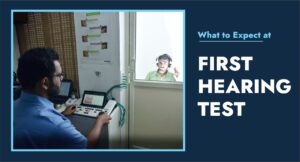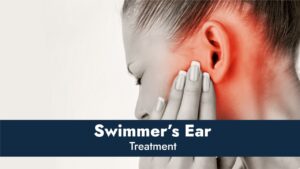Flying on a plane can affect ears in several ways causing a major problem. Especially, people with an ear infection or any other condition such as tinnitus or balance disorder. The prime challenge with air travel is that the pressure inside the cabin is different from our daily lives. Although, the air pressure inside the planes or helicopters lower than usual.
As soon as the aeroplane takes off from the land, the pressure of the air outside your body drops gradually. Perhaps, causing ear problems because they contain a small amount of air in the middle air. The level of air pressure inside the middle ear is higher than the air in the surrounding cabin. Therefore, some of the air is needed to be released using the Eustachian tube. As this happens you may hear ears pop.
When the aeroplane is to its way down to land, the pressure will change again to divergent direction. The cabin air pressure will escalate so that it is higher than the pressure of the middle ear. To equalise ear pressure again the air needs to be drawn through the Eustachian tube. Although, this can be a struggle than releasing air during take-off. So if your ears fail to pop properly it is more likely to be when you are landing.
What Causes a Blocked Eustachian Tube?
There are numerous reasons why the Eustachian tubes block. Only an ENT specialist can accurately diagnose a problem. However, there are some common reasons which affect the problem:
• Cold
• Nasal passage blockage
• Nasal allergies
• Sinus infections
• Ear infections
• Poor Eustachian tube ear structure
• Enlarged Adenoids
Is it Safe to Fly with an Ear Infection?
Many travellers are afraid to travel on a plane with an ear infection. We advise to always consult with your ENT doctor in India before flying. Especially, children and adults should avoid flying on a plane with an ear infection or sinus infection. Both the problems affect Eustachian tubes, placing high ear pressure on the eardrums. As a result, eardrums can rupture, thereby, can cause discomfort and pain.
When to Avoid flying With Ear Infection?
Aeroplane engines are a major source of noise-causing additional issues when you have an ear infection. Above that, changes in air pressure are more problematic. Ear infections can build-up fluid inside your ear causing inflammation. This can affect the performance of Eustachian tubes. If the middle ear fluid increases or the Eustachian tube narrow down then the air won’t be able to pass as easily. As the aeroplane takes off or lands, the pressure inside the ear won’t be able to equalize.
Thus, as it happens your ears will feel uncomfortable as they won’t be able to pop up. On the contrary, in severe conditions, the situation is quite painful. In some cases, if the surrounding air becomes lower than air present in ear the patient may experience muffled hearing because the eardrum is sucked inwards.
How to Deal Ear Infection When Flying?
No matter if you have an ear infection or not. The feeling of ‘fullness’ in-ears during takeoff and landing is painful. Here are four tips for beginners to deal with pain when flying in an aeroplane with an ear infection.
• Swallowing: Did you know swallowing helps Eustachian tubes to open up. Sucking on chewing gum or hard candies will prompt you to swallow more. Try them before takeoff and during landing.
• Yawning: Yawning is a reflex comprise of simultaneous inhalation of air and the stretching of eardrums. It is more effective than chewing gums as it opens the Eustachian tubes.
• Use Decongestants: During the flight or as soon as you land use decongestants or nasal sprays to allow passage. Consult ENT doctor to explore the best options for you.
• Stay Awake: When asleep we often do not swallow. Subsequently, stay awake during takeoff and landing.
If you do not want ear infection to hamper your vacations you may consider seeking ENT specialist. If you are planning to fly anytime soon and showing signs of ear infection, check with your ENT doctors for ear infection treatment at the earliest.


